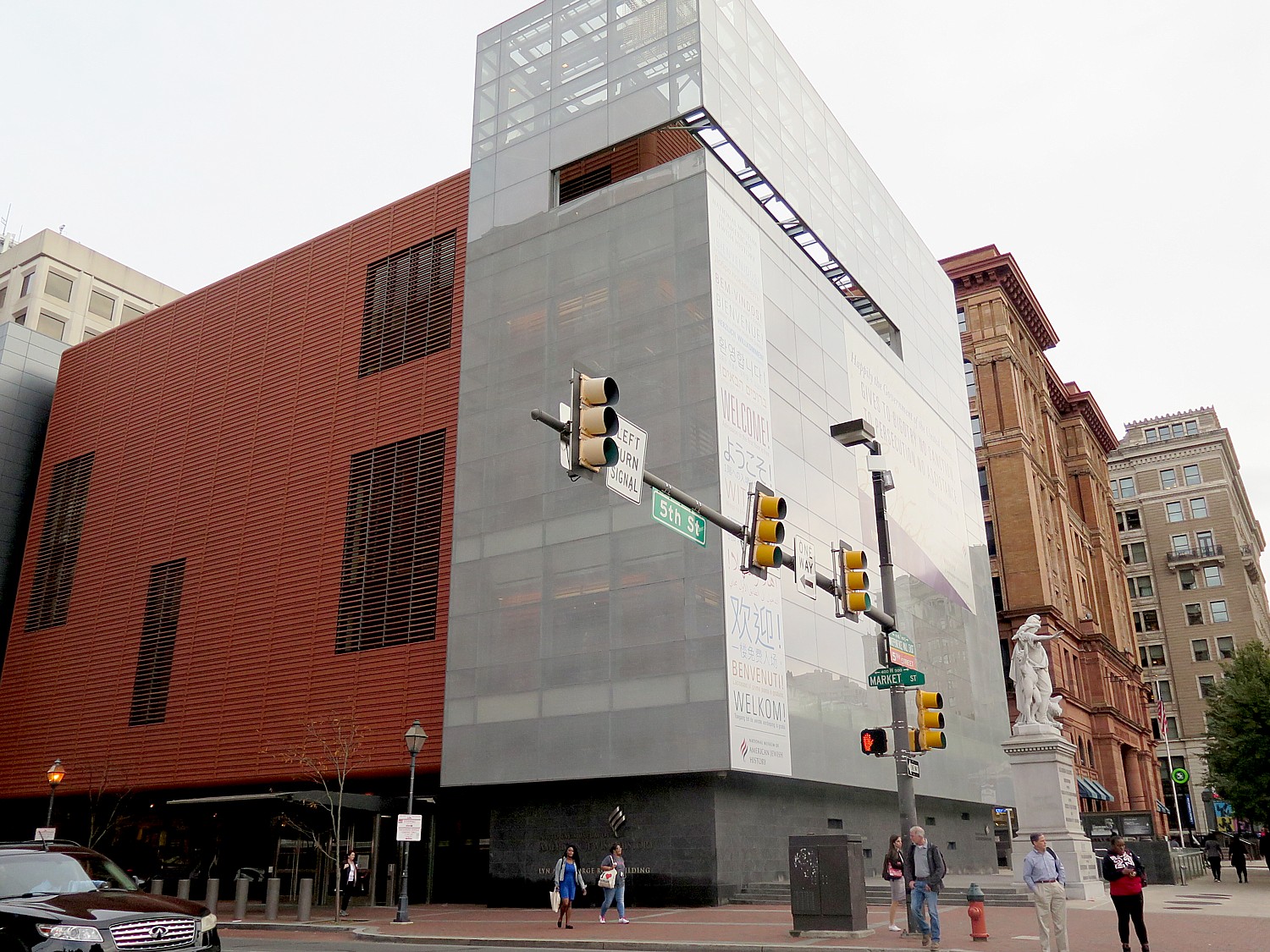
By Karen Rubin, Travel Features Syndicate, goingplacesfarandnear.com
I used the opening of the brand new Museum of the American Revolution as the theme for my three-day visit to Philadelphia – a really deep dive probe of the Revolutionary War era, a return to understanding the founding of the nation, through, original documents, materials and artifacts, at a time when we need to be reminded – everything from the off-hand comment by Trump Chief of Staff John Kelly that the Civil War could have been averted if only there were compromise (he should go to the National Constitution Center), to the quixotic amazement of a US Treasury official pining on his research into what’s this thing, “The American Dream,” before adopting the biggest redistribution of wealth since the Gilded Age, to the right-wing meme that America is a (white) “Christian Nation.”
Philadelphia is like hopping from time-capsule to time-capsule because you go from one authentic site where events happened, where the Founders and builders of this nation actually stood, to another. Come, time-travel with me. And the best way to appreciate it – and be wonderfully surprised at ever twist and turn– is to walk. That’s how you come upon things you never considered – the historic markers which point out where Wanamaker’s Department Store was, the Ricketts Circus, the American Philosophical Society (founded by Ben Franklin). I see an Art Deco “Automat” sign; the stunning Art Deco architecture of a building, gorgeous giant murals that pop up out of no where. I practically fall over what closer inspection tells me is the very townhouse whereThomas Jefferson stayed when he wrote the Declaration of Independence (called “Declaration House”), a short walk from Independence Hall.
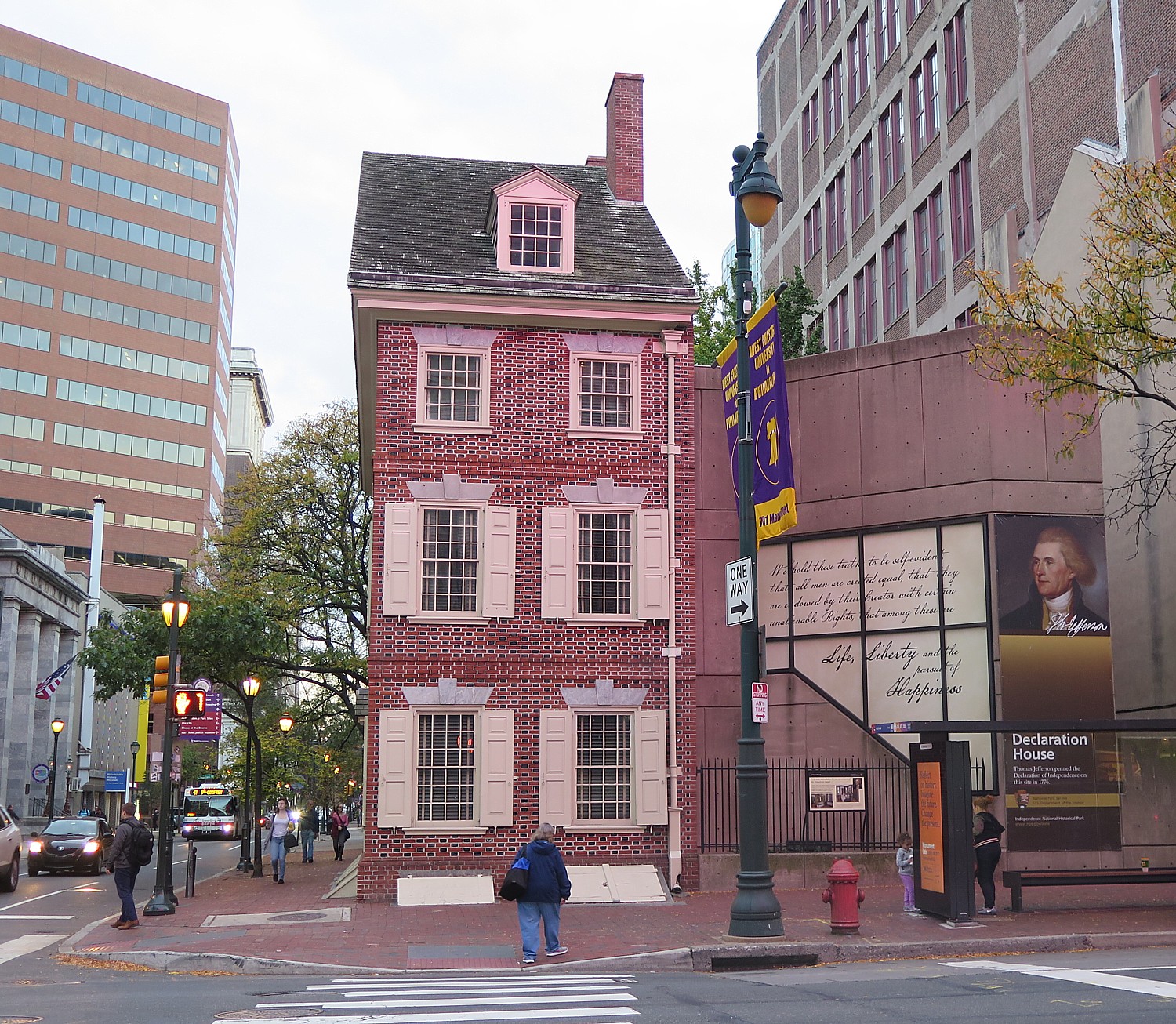
This is why it is so terrific that my hotel, the Sonesta Downtown Philadelphia Rittenhouse Square is so well located (1800 Market St. Philadelphia 19103, 215-561-7500).
It’s the afternoon when I arrive at the Sonesta Hotel on Market Street (a parking garage is adjacent) and after checking in, I have just enough time to explore one attraction on my list.
I am headed to the Betsy Ross House, walking down Market Street, literally through Philadelphia’s magnificent City Hall. Walking, you get to see the markers which discuss the history of this site and how the city was planned out. You also can stand on a podium and have a photo taken of yourself as a monument.
As I walk passed the lawn that is just opposite Independence Hall, I spot a huge banner proclaiming the George Washington’s famous words, “Happily the Government of the United States Gives to Bigotry no Sanction, to Persecution No Assistance,” and a statue, in commemoration of the nation’s centennial, “ dedicated to “Religious Liberty. Dedicated to the People of the United States by the Order B’nai B’Rith and Israelites of America.” Then I see a small banner advertising the National Museum of American Jewish History and realize I am standing in front of it. Who knew there was such a thing?
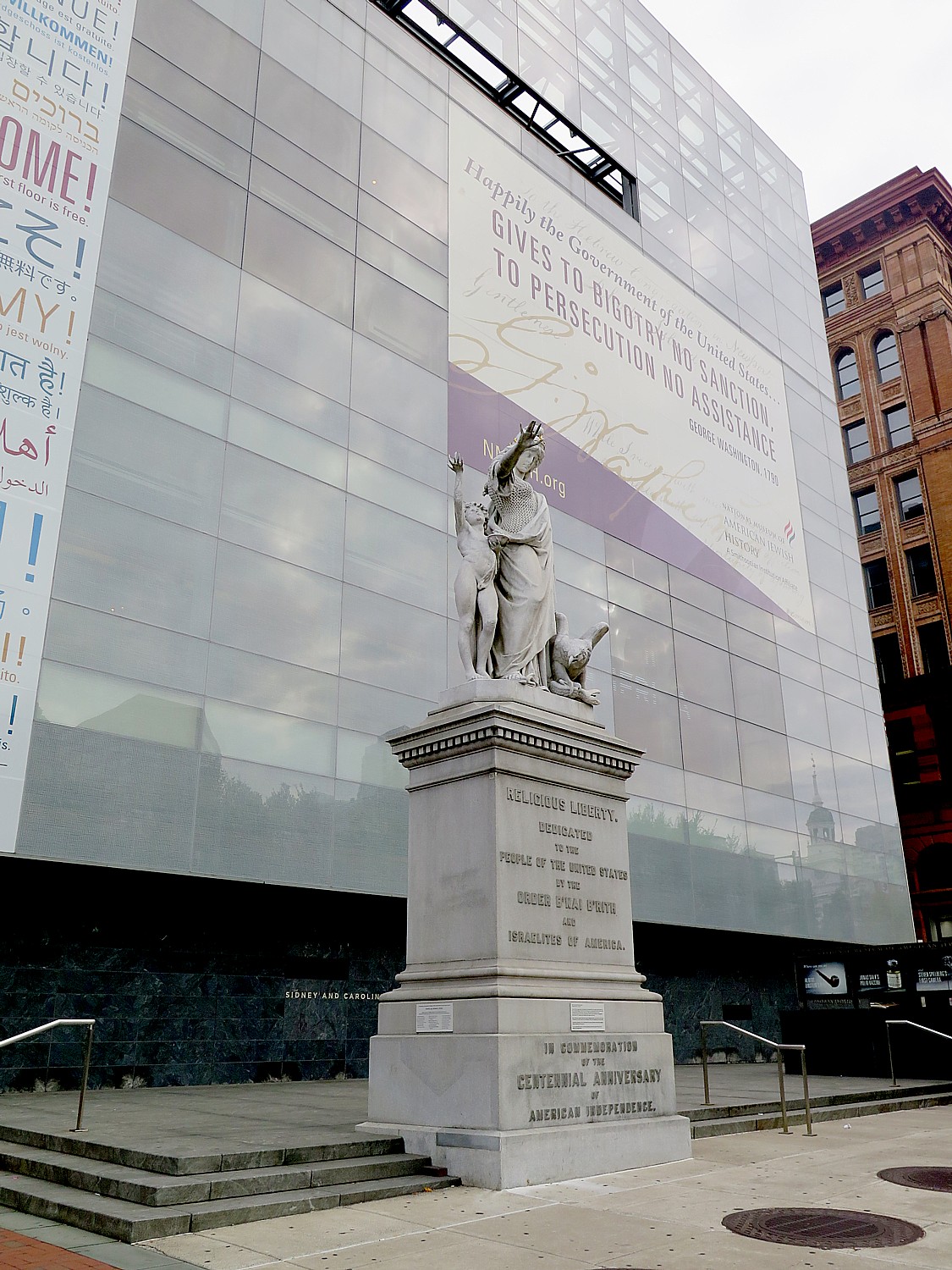
In point of fact, the museum has only been in this building in a prime location in the historic district since 2010; previously, the original collection which formed the basis of this grand museum was housed in Philadelphia’s oldest synagogue, Congregation Mikveh Israel, known as the “Synagogue of the American Revolution,” is the oldest formal congregation in Philadelphia, and the oldest continuously operating synagogue in the United States. It dates back to 1740 when Thomas Penn granted land to Nathan Levy for a burial plot for his son. The current incarnation of the synagogue, a modern building, is only about a block away from the Museum, tucked behind (appropriately enough), the Bible Society Building which is directly across the street from the National American Jewish History museum, and across the street, as it happens, from the National Constitution Center. It all fits together and is most appropriate for my visit to Philadelphia this weekend timed for a family Bat Mitzvah.
I have a little less than two hours before the museum closes, and you need a minimum of 2 ½ (good news: the ticket is good for a two-day visit).
The National Museum of American Jews was a revelation to me – beginning with why it is “National”: it is the only museum of its kind in the nation. That’s why.
I have seen parts of the story in other venues – notably Touro Synagogue in Newport, Rhode Island (www.tourosynagogue.org), the Holocaust Museum in St. Petersburg, Florida; Ellis Island and the Jewish Museum in New York City– but none presented such a comprehensive unfolding of the epic Jewish experience in America that dates back nearly as far as the Puritans in Plymouth (though Jews first settled in the New World since Columbus).
Its exhibits and galleries, the artifacts and commentary brilliantly presented to express complex concepts – the sweep of history, in effect – but taken down to very personal levels of a person, with a face, a name and a genealogy.
It comes down to legitimacy – much as the museums which speak to the Jewish people’s history in Israel – and the illegitimate notion of the United States founded as a Christian nation (See New York Times, Jan. 6, 2018: The Museum of the Bible Is a Safe Space for Christian Nationalists.)
Non-Christians were part of this country’s founding and the Founders, who were humanists, globalists and men of the Enlightenment – among them George Washington, Thomas Jefferson and Ben Franklin – were not only tolerant of other religions but open-minded about philosophies. But what is painfully clear are the strains of anti-Semitism and racism that have persisted throughout American history despite George Washington’s assurances to the Touro congregation (“To Bigotry No Sanction,”), despite the Bill of Rights and the Naturalization Act of 1790 which bar the establishment of religion, an issue as relevant as today’s headlines.
There are four floors which wrap around a huge atrium, each floor devoted to a different era and theme. The displays, including multi-media , interactive stations, and artifacts, are well presented to convey complex, even nuanced concepts, intertwining real people with places, historical events and cultural movements. In some instances, it is the sheer numbers that impress.
Foundations of Freedom: 1654 – 1880
I start on the top floor, “Foundations of Freedom: 1654-1880”. Do most Americans realize that Jews were already settled in the New World colonies from 1654? A giant map shows the trade routes that coincided with Jewish migration, especially after the Spanish Inquisition of 1492, which drove many into the Caribbean islands. (How many people realize that the first white settlement were of Marrano Jews in Jamaica?) Then, when the Spanish took over, a group fled Barbados where they had lived since the 1620s, to Newport, Rhode Island in 1658.
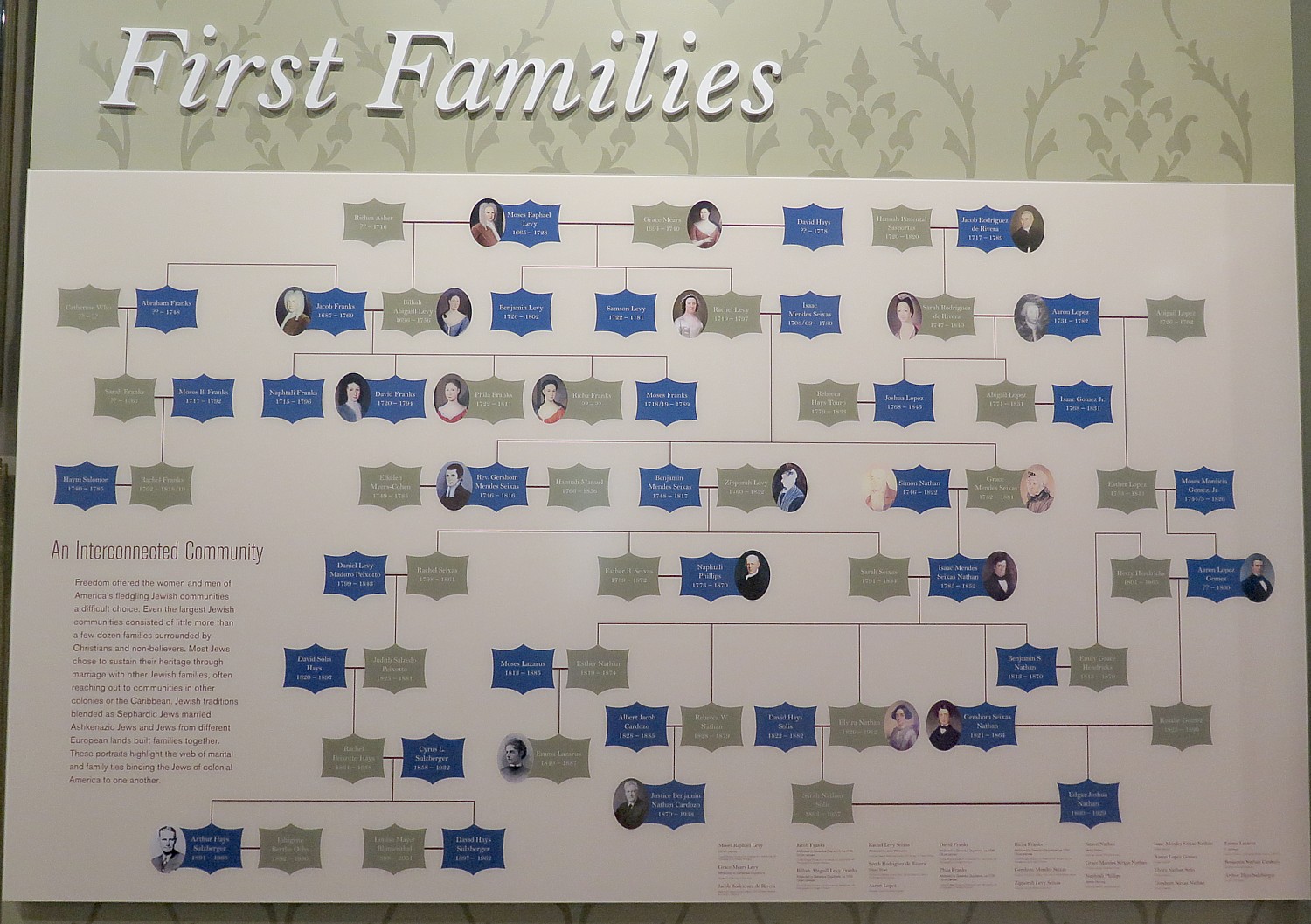
You gaze at a family tree of the first Jewish families, most of Portuguese background.
Asher Levy came to North America in 1654; look down his family tree and you come to Arthur Sulzburger (1881-1964), whose family publishes the New York Times.
By the 1600s, a small group of Jews settled around Charleston, SC; a 1669 constitution, written by John Locke, granted “Jews, heathens and other dissenters” the freedom to worship.
Throughout the displays, there is a kind of running count which puts into perspective Jews in America:
“European laws excluded Jews from most trades except finance and commerce, so they settled in port cities. In 1700, there were 250 Jews among the population of 250,000 white settlers in colonial America; zero synagogues. The population grew slowly, from a mere 250 out of a population of 250,000 to 2500 out of a population of 3.9 million by the end of the 1700s.
In Savannah in 1733, there were 42 Jews – the largest single Jewish group to arrive in colonies up to that time. Among them, was a Jewish doctor who arrived during an epidemic and began caring for ill and dying.
Jews arrived in Philadelphia in the 1730s; by 1760, there were close to 100 Jews.
We learn that Jewish Americans were split (like the colonists) over whether to side with the Patriots or the Loyalists in the American Revolution, based on livelihood, families and aspirations, but “most Jews stood for independence.”
New York’s Jews collaborated with British Loyalists; Jews who sided with Patriots escaped to Philadelphia.
The US Constitution made American Jews citizens in 1790, but some states had laws lasting well into the 19th century barring Jews from holding public office (despite the Bill of Rights’ first amendment which prohibits the establishment of religion).
“To bigotry no sanction, to persecution no assistance” George Washington wrote in 1790 to the congregation of the Touro Synagogue in Newport, founded by Portuguese Jews in 1763 who fled their settlements in the Caribbean when it appeared the Inquisition would be imported there from Spain and Portugal.
Of the 3.9 million population in the fledgling nation, 2,500 were Jews; 9 of 13 states required public officials to be Christian even though the 1790 Naturalization Act contained no religious requirement.
A theme that runs through is of what it means to perpetually be a minority in America.
Innovation & Expansion
A section themed “Innovation & Expansion” is part of the timeline of Jews in America usually ignored entirely, but Jews were very much a part of the Westward expansion and the march to the Industrial Revolution.
From 1820-1870, the United States doubled in physical size, the population quadrupled and the Industrial Revolution transformed society.
For Europeans, America beckoned as a land of opportunity; millions of immigrants crossed to be the laborers that built the factories, railroads, roads, including 200,000 Jews, attracted by promise of economic and political freedom.
The population of Jews during this period mushroomed, from 2500 to 250,000.
Here we see the photos and effects of families, personifying the experience.
There is a large map spread out on the floor where you can play a video that shows the expansion; and a whole room where you see, city by city, how Jews populated them, and particular highlights.
In New York City, in 1823, for example, the first Jewish periodical, “The Jew” began publishing. During the 1800s, New York City became a center of political, economic and cultural life of American Jews. By 1840, a majority of American Jews lived in the city; the population grew to 60,000 by 1860.
Baltimore saw its total population increase from 120,000 to 320,000 during the mid-1800s, with its Jewish population increasing from 100 to over 10,000 by mid-1860s.

Other cities: Cincinnati, where Hebrew Union College opened in 1875;
Trinidad Colorado was where the B’nai B’rith was founded in 1843, modeled after the Masons, Odd Fellows and other fraternal organizations.
With each display, there are specific people who are associated and here, we learn of the “Girl Rabbi of the Golden West: Pioneering female Jewish revivalist” (she gave up preaching when she married).
The Civil War was as traumatic for Jewish Americans as it was for the rest of the country.
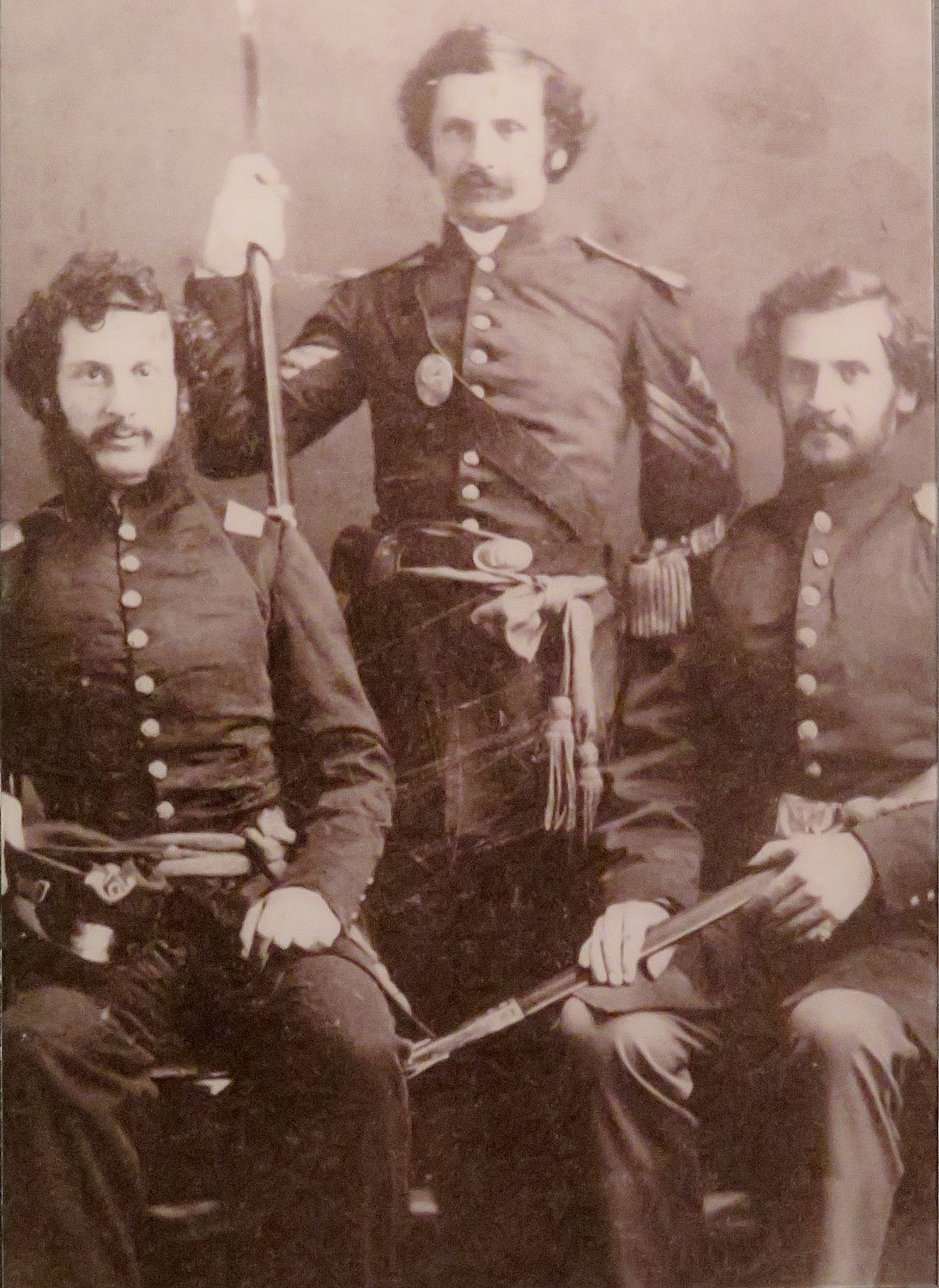
Just as Jewish colonists were divided over the issue of joining the Revolution or remaining loyal, there were also splits over supporting Union or the Confederacy, largely based on where they were living and their livelihood. In the section themed, “Union & Disunion,” the Civil War era, it notes, “Jews never unified on issue of secession or slavery: 10,000 Jews fought in the Civil War: 7000 for Union, 3000 for Confederacy. Which side depended largely on where they lived as well as their livelihood.
3rd floor — Dreams of Freedom: 1880 – 1945
You can easily spend two hours just on the fourth floor alone, but I see how limited my time is and go down to the third floor: themed “Dreams of Freedom: 1880-1945”, chronicling the migration of millions of immigrants who came to the United States beginning in the late 19th century who profoundly reshaped the American Jewish community and the nation as a whole.
The first section of this floor considers immigration and integration: getting to America, making a home, the reception immigrant Jews received, and learning to negotiate American society. The second section takes up life after Congress legislated the end of free and open immigration in 1924. Through the lenses of the fine and performing arts, political activism, and religious expression, it explores how Jews defined what it meant to be an American Jew during an insecure period of American, and world, history. The final section of Dreams of Freedom delves into how American Jews experienced World War II.
It addresses the strain of anti-Semitism that has existed throughout American history, going back to colonial times – in Newport (when Lopez was refused American citizenship and had to get it in the Massachusetts colony), and New Amsterdam, when Peter Stuyvesant wanted to throw Jews out but the Hudson Bay Company insisted Jews be given rights, even despite George Washington’s pronouncement and the First Amendment to the Constitution.
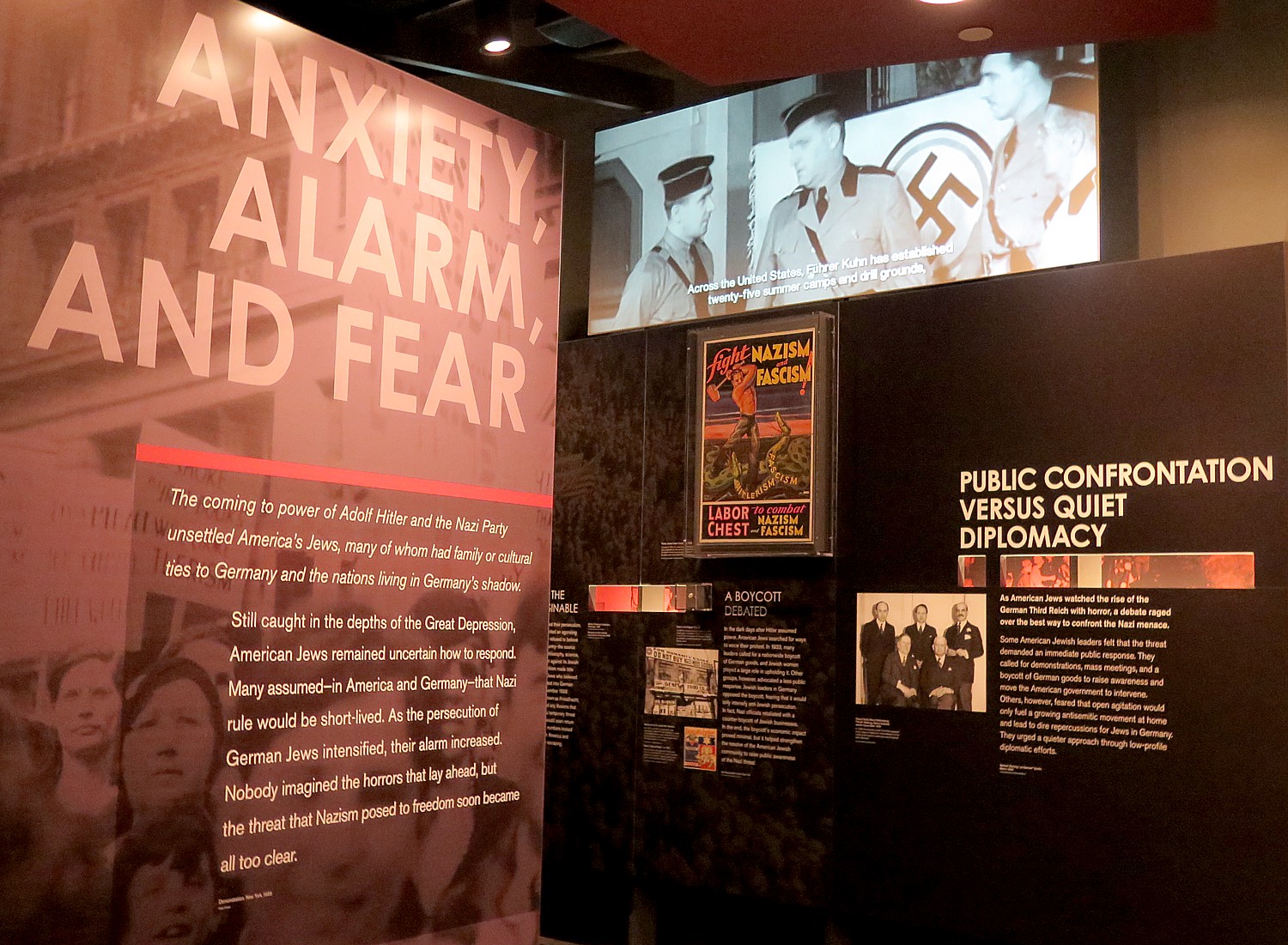
So even though the Constitution provided for religious freedom, states denied Jews the right to hold political office; even after World War II, Jews were denied access to housing, hotels, country clubs, college and jobs.
And as the Roaring Twenties was followed by the Great Depression, a virulent strain of anti-Semitism re-emerged leading up to World War II, when many in Franklin Roosevelt’s cabinet and the majority of Americans content to let Hitler and Nazi Germany begin its murderous campaign against European Jews. “No War for Me” characterized mood of Americans not to lift a finger to help Jews during the Holocaust. (Breckinridge Long, assistant secretary of state, pushed for strict immigration controls that blocked Jewish refugees from escaping the Nazis.)
Choices and Challenges of Freedom: 1945 – Today
The Museum’s second floor begins in the immediate postwar period with stories of migration, from war torn Europe, the Middle East, the Caribbean, and the Soviet Union. Within the United States, as well, Likewise, between 1945 and 1965, there was a huge migration: about a third of all American Jews left large urban centers and established themselves in new suburban communities like Long Island. For Jews and non-Jews alike, a suburban home became a sign of success, prestige, and security-a “Shangri-La” for the middle class.
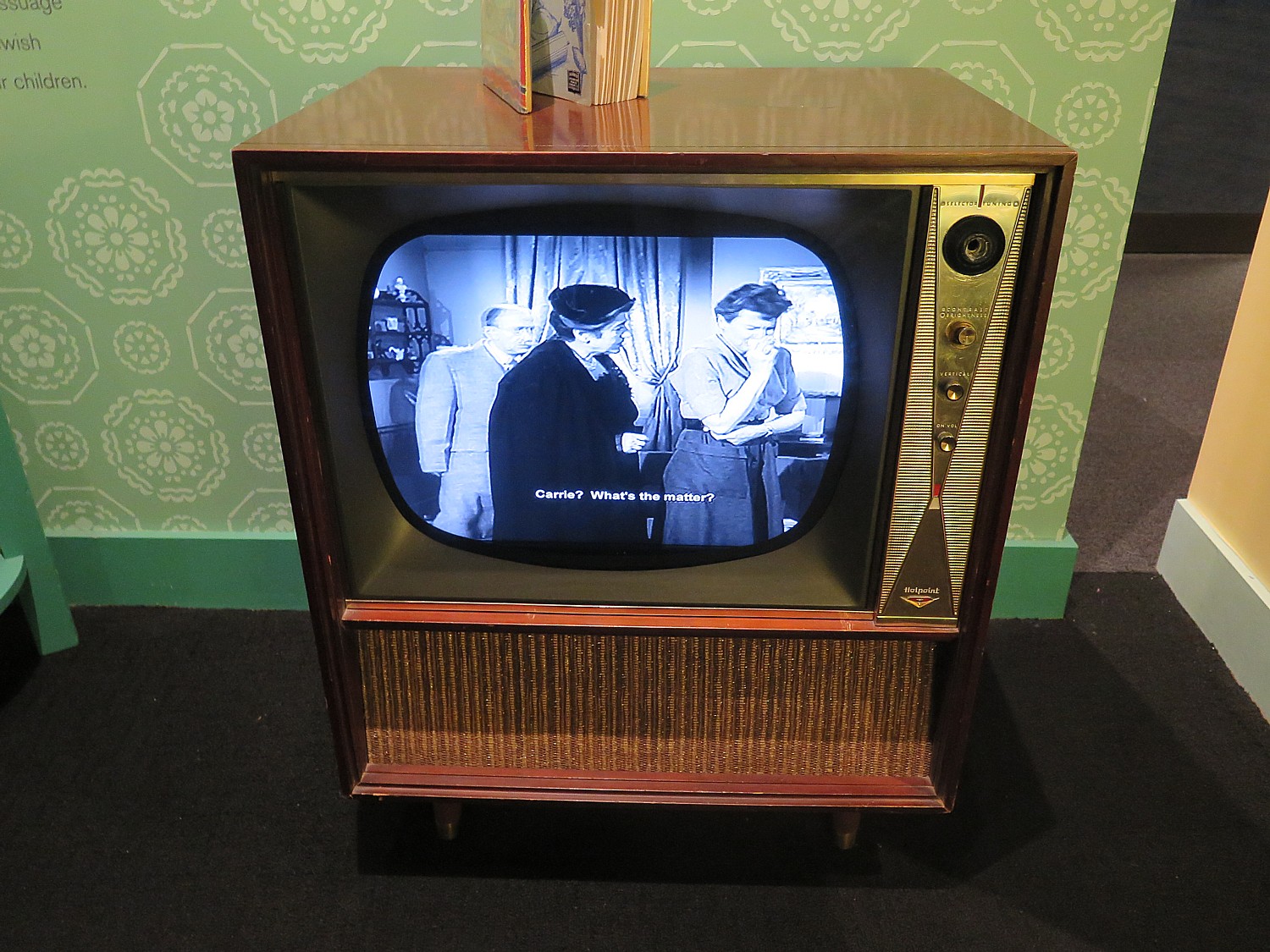
After World War II, American Jews felt comfortable with their identity and Jewish communities thrived in the new suburban communities of the 1950s into the 1960s – 60% of Jewish families belonged to synagogue, twice the percentage as 30 years before. Community synagogues were a locus for Jewish life and Bar and Bat Mitzvahs became legendary affairs; Jewish kids went to Jewish summer camps and families vacationed in the Borscht Belt of the Catskills. You walk through a mock-up of a 1950s suburban house, such as you might have found in Levittown, Long Island, where a black-and-white TV is airing an episode of a Jewish American sit-com, “The Goldbergs.”
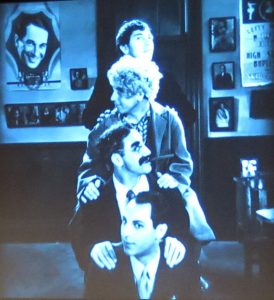
Here you see how Jewish American culture went mainstream. The museum incorporates multi-media – videos, sound tracks – there is a small theater where you watch performances by Jewish entertainers going back to early films, theater and television (Fannie Brice, Marx Brothers, George Burns, Three Stooges, Eddie Cantor, Bud Abbott, Sophie Tucker, Al Jolson); a series of changing images of major figures like Simon & Garfunkle, Carole King.
American Jews felt comfortable enough in American society to emerge as activists who championed civil rights, women’s rights and social and political justice, including Gloria Steinem and Bela Abzug.
Activist for women’s rights and cultural icon, Gloria Steinem © Karen Rubin/ goingplacesfarandnear.com
Only in America Gallery/Hall of Fame
The first floor houses an Only in America Gallery/Hall of Fame honors 18 Jewish Americans – some well known, others less so, and the choices, challenges and opportunities they encountered on their path to remarkable achievement. Through the lives of real people—some well known, others less so—the gallery, utilizing a combination of multimedia, original artifacts and interactive experiences, weaves compelling stories from the past and present with the larger themes of the Museum.
The first 18 individuals featured in the Only in America Gallery/Hall of Fame are: Irving Berlin, Leonard Bernstein, Louis Brandeis, Albert Einstein, Mordecai Kaplan, Sandy Koufax, Esteé Lauder, Emma Lazarus, Isaac Leeser, Golda Meir, Jonas Salk, Menachem Mendel Schneerson, Rose Schneiderman, Isaac Bashevis Singer, Steven Spielberg, Barbra Streisand, Henrietta Szold, and Isaac Mayer Wise. Recent inductees include Gertrude B. Elion and Julius Rosenwald.

There are also special exhibits: the upcoming one is Leonard Bernstein: The Power of Music, which celebrates the centennial birthday of one of the 20th century’s most influential cultural figures, who personified classical music and produced a rich repertoire of original compositions for orchestra and the theater. “Audiences may be familiar with many of Bernstein’s works, notably West Side Story, but not necessarily how he grappled with his own religious, political, and sexual identity, or how he responded to the political and social crises of his day. Visitors will find an individual who expressed the restlessness, anxiety, fear, and hope of an American Jew living through World War II and the Holocaust, Vietnam, and turbulent social change – what Bernstein referred to as his ‘search for a solution to the 20th‐century crisis of faith’.” The exhibition will feature one‐of‐a‐kind historic artifacts, all brought to life through immersive film, sound installations, and interactive media. (On view March 16 – September 2, 2018.)
Free public hour-long Highlights tours are usually offered daily at 11:30 am and 2:30 pm. (Availability is subject to change, so check at the Admissions Desk on the day of your visit for confirmed times.) Space is limited; interested visitors should request tour badges from Admissions to reserve a spot, which are distributed on a first-come, first-served basis.
More than 30,000 artifacts form the basis of the core exhibition. You can browse selected objects on its site as well as search the Museum’s online collections database, and its Pinterest page.
You need at least 2 ½ hours but the ticket is good for two consecutive days.
National Museum of American Jewish History; 101 South Independence Mall East; Philadelphia, PA; 19106-2517; (215) 923-3811; www.nmajh.org
Mikveh Israel
I am chased out of the museum at closing (they are setting up for a wedding), and am intrigued to visit Mikveh Israel synagogue a short walk away. It is Friday evening and the synagogue, which is Sephardic, is getting ready for Sabbath services.
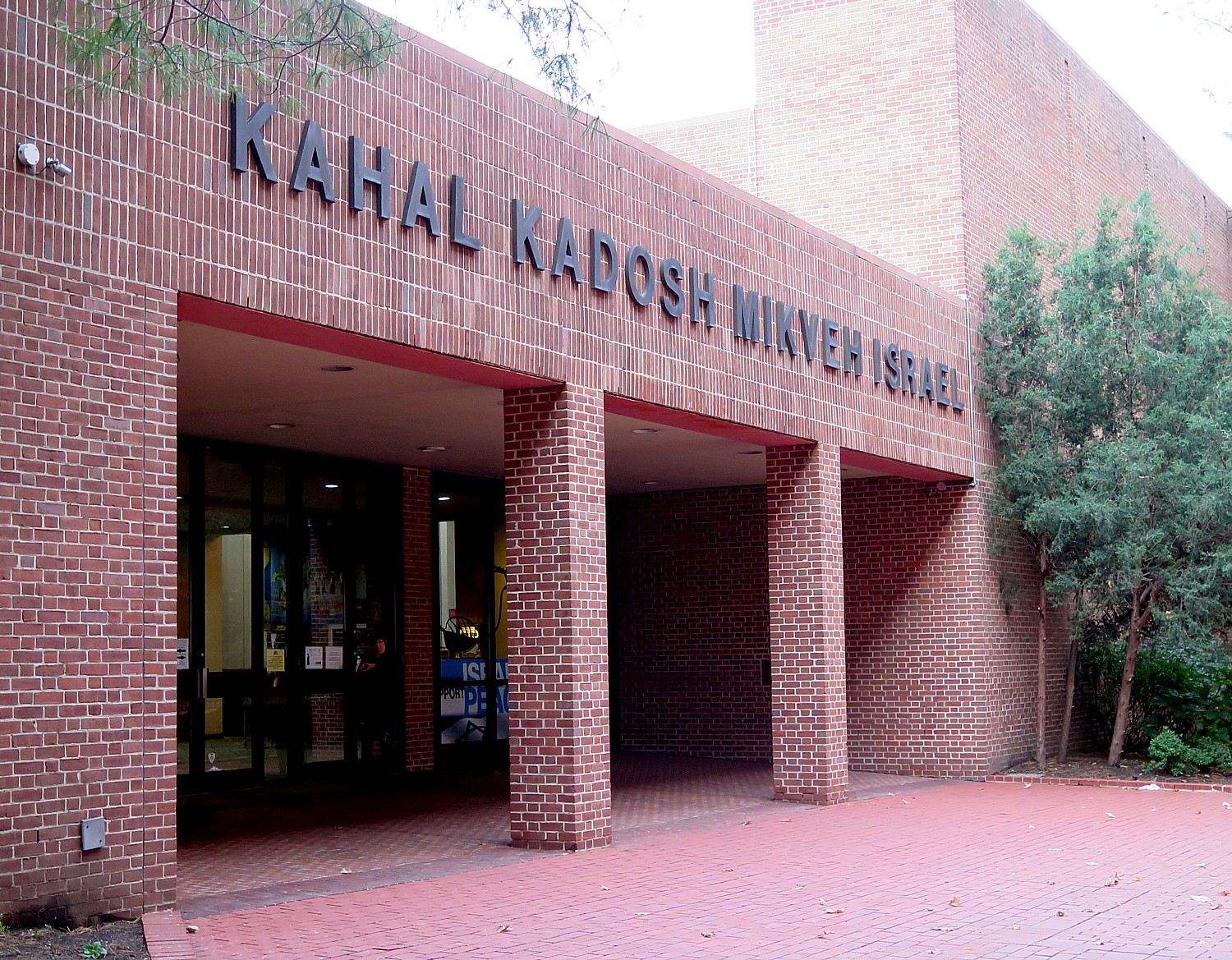
Mikveh Israel traces its beginning to 1740, when Thomas Penn granted land to Nathan Levy for a burial ground for Levy’s infant son. There, Levy established a cemetery for the Jewish community. Mikveh Israel’s first house of worship was completed in 1782 with financial assistance from Benjamin Franklin, among others. The synagogue has moved several times before returning to its original neighborhood in 1976, the Bicentennial.
Mikveh Israel follows the Spanish-Portuguese (Sephardic) ritual, introduced by Reverend Gershom Mendez Seixas, who, in 1780, came to serve as Hazzan (Congregational Leader). This relatively modern building, not far from its original 1782 redbrick structure on Cherry Street, is its fifth since the synagogue’s founding. (Limited hours to visit. 44 N. 4th St. Philadelphia PA 19106, 215-922-5446, www.mikvehisrael.org/.)
The Jewish cemetery on 8th and Spruce Streets, part of Independence National Historical Park, includes the grave of Rebecca Gratz, who is believed to be the inspiration for the character Rebecca in Sir Walter Scott’s “Ivanhoe,” and memorials to Haym Salomon, who helped finance the American Revolution.
(Read more: http://www.visitphilly.com/history/philadelphia/mikveh-israel-congregation-and-cemetery/)
Just outside Mikveh Israel, there is a monument of Uriah Phillip Levy, born in Philadelphia in 1792, a 5th generation American (his great-great grandfather, Dr. Samuel Nunez, arrived in America in 1733 and was a founder of the city of Savannah, Georgia). Levy left for sea when he was 10 years old, returning to Philadelphia for his Bar Mitzvah. He joined the US Navy in 1812, serving with distinction in the War of 1812. During his 50-year career in the Navy, he was court marshaled 6 times and killed a man in a duel – all related to anti-Semitism. He became the first Jewish Commodore of the United States Navy. During the Civil War, he helped repeal the practice of flogging sailors.
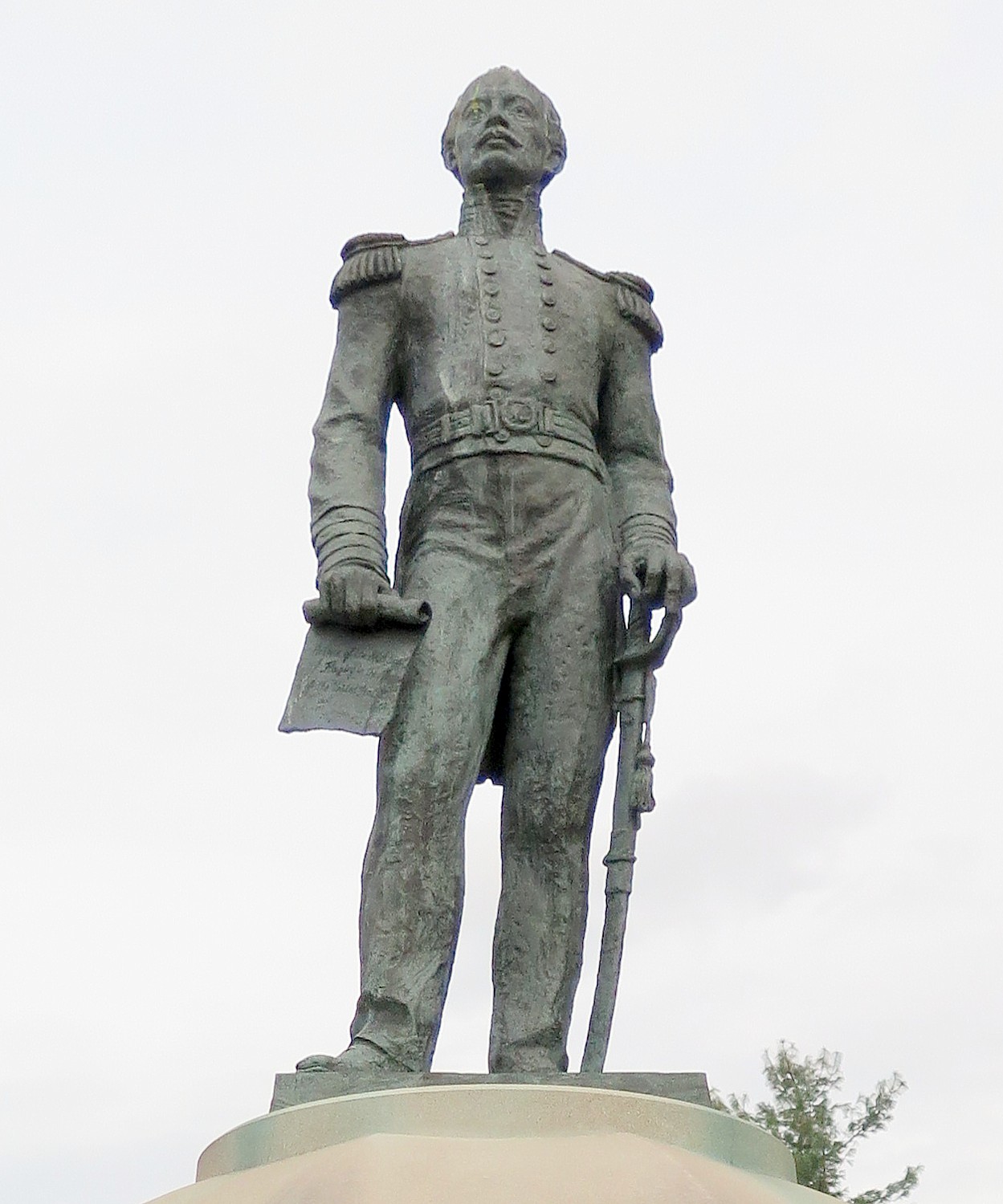
Levy was a great admirer of Thomas Jefferson and purchased Monticello in 1834 – at that point, Jefferson’s mansion home was in a terrible state of disrepair. Levy restored and renovated the structure, and opened it for public viewing. but local people were incensed that such a structure was owned by a Jew, they tried to have the property taken away. A World War II destroyer was named in his honor, the USS Levy, as well as the Jewish chapel at Norfolk Naval Base; he is buried at Beth Olam cemetery in Queens (Emma Lazarus is as well).
(Our exploration into Revolutionary War America continues with the Museum of the American Revolution, Ben Franklin Museum, Betsy Ross House and National Constitution Center.)
Visit Philadelphia provides excellent trip planning tools, including hotel packages, itineraries, events listings: 30 S 17th Street, Philadelphia PA 19103, 215-599-0776, visitphilly.com.
_____________________________
© 2018 Travel Features Syndicate, a division of Workstyles, Inc. All rights reserved. Visit goingplacesfarandnear.com, www.huffingtonpost.com/author/karen-rubin , and travelwritersmagazine.com/TravelFeaturesSyndicate/. Blogging at goingplacesnearandfar.wordpress.com and moralcompasstravel.info. Send comments or questions to [email protected]. Tweet @TravelFeatures. ‘Like’ us at facebook.com/NewsPhotoFeatures
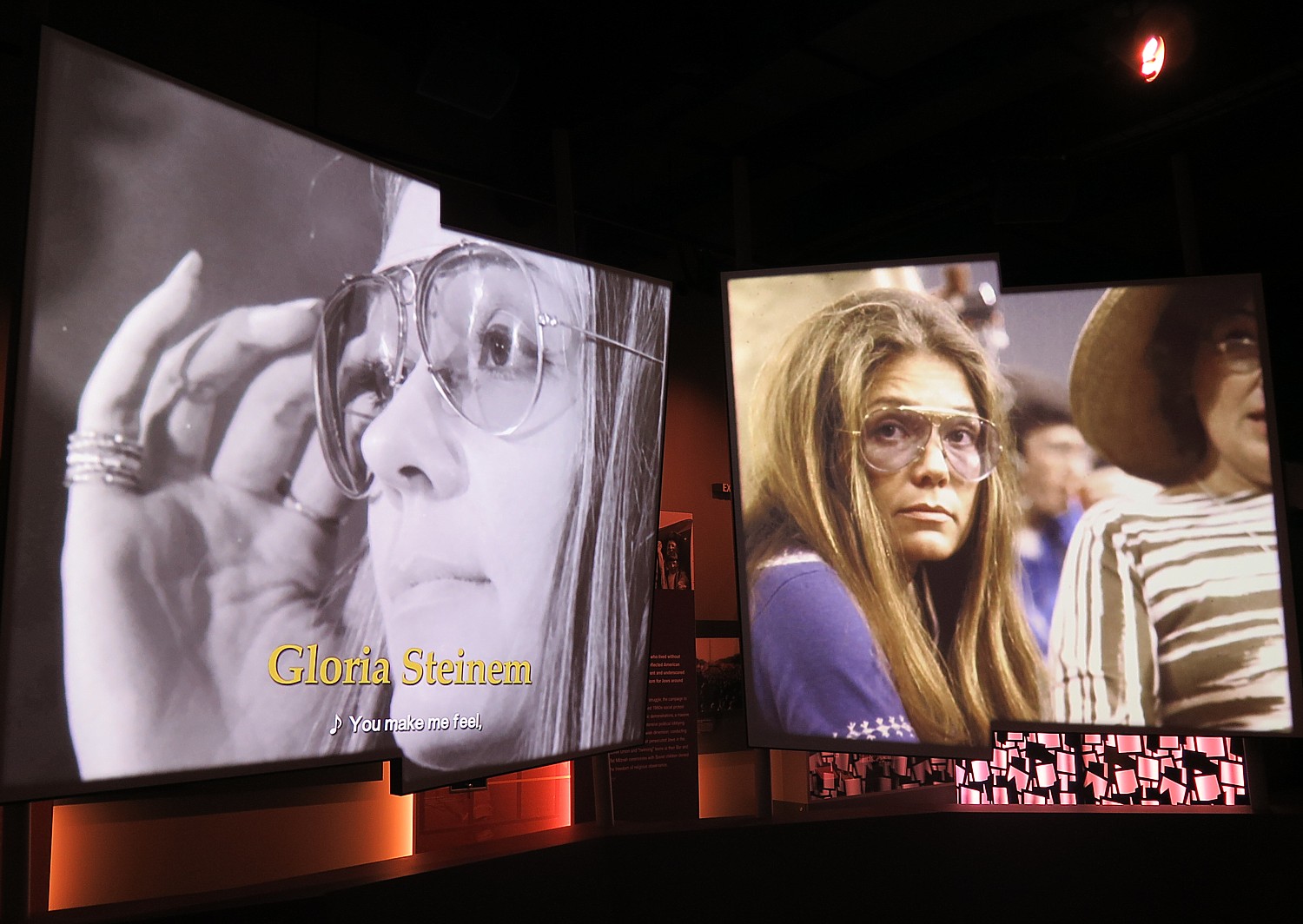

5 thoughts on “National Museum of American Jewish History is Unexpected Revelation in Philadelphia”
Comments are closed.